

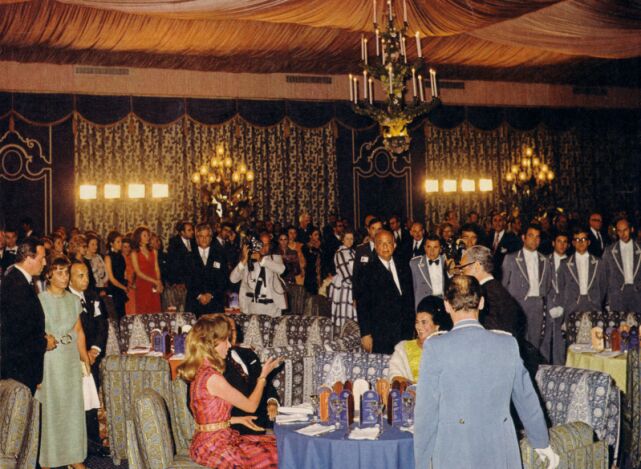
On the last night in Persepolis, the evening of the day of the great parade, the Shah and the Shahbanou offered a traditional Persian party in the Banqueting Hall, a much more informal event than the banquet on the previous night. The Shah and the Shahbanou moved from table to table to meet their guests and chat with them, sometimes with help of translators. The mood was, once again, fantastic. Who could have imagined Princess Anne and the Duke of Edinburgh, very relaxed, chatting with Jovanka Tito? Seating around round tables and seating in comfortable sofas, the guests had their evening animated by traditional music. It was a perfect way to end the festivities in Persepolis, another great help to the diplomatic effort that was the greatest goal of the festivities.
The following morning, the Shah and the Shahbanou and many of the guests left to Shiraz and from Shiraz to Teheran by plane, while other guests left Iran directly from Shiraz, undoubtedly amazed by the outstandingly great celebrations they had witnessed, something like a dream made reality, something totally surreal, maybe even unreal… A scale of unimaginable pomp and splendour, of royalty and power, in the middle of the desert and in a relaxation that it could be thought impossible to achieve before Persepolis. Together with the demonstration of Iranian culture and history, made of Persepolis a sublimely unforgettable and unforgettably sublime event.
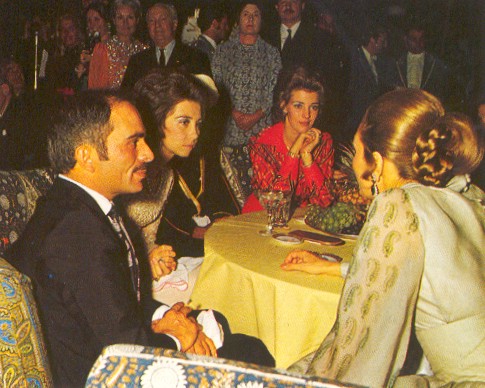
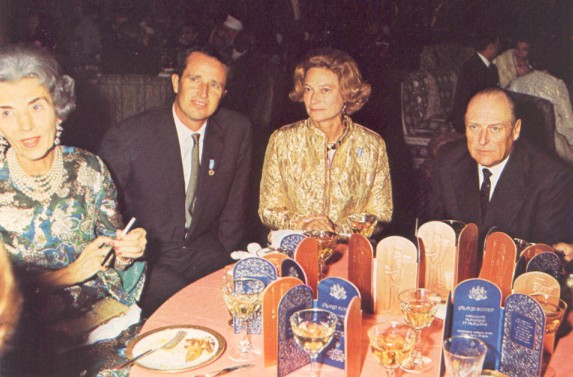
In Teheran, the Shah would close the celebrations, that 16th October, in a series of events culminating with a ceremony of homage to his father, Reza Shah the Great. Before that, His Imperial Majesty opened the magnificent Shahyad Tower, built to celebrate the auspicious event, having in its basis a museum of Persian History. On the opening exhibition was displayed the historical Cylinder of Cyrus the Great, lent by the British Museum, to which collection it belongs.
A replica of the cylinder was offered to the Shah by the Mayor of Teheran: in it Cyrus claims to have achieved the conquest of Babylon in 539 BC and capture of Nabonidus, the last Babylonian king, with the aid of Marduk, the god of Babylon. He then describes measures of relief he brought to the inhabitants of the city, and tells how he returned a number of images of gods, which Nabonidus had collected in Babylon, to their proper temples throughout Mesopotamia and western Iran. At the same time he arranged for the restoration of these temples, and organized the return to their homelands of a number of people who had been held in Babylonia by the Babylonian kings. Although the Jews are not mentioned in this document, their return to Palestine following their deportation by Nebuchadnezzar II, was part of this policy. The cylinder is often describe as the first charter of human rights.
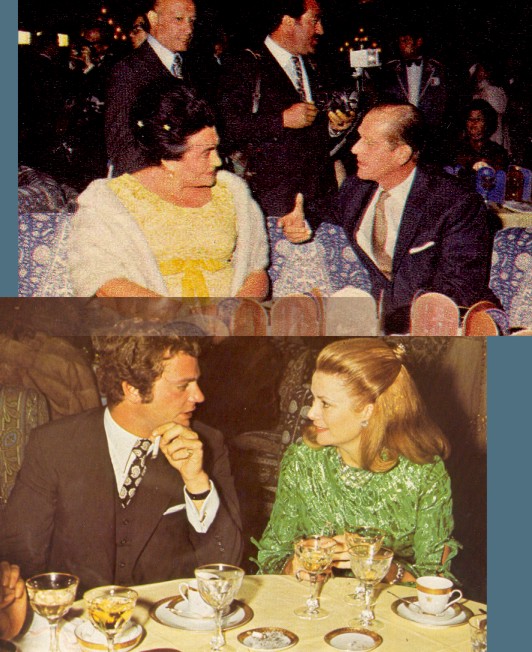
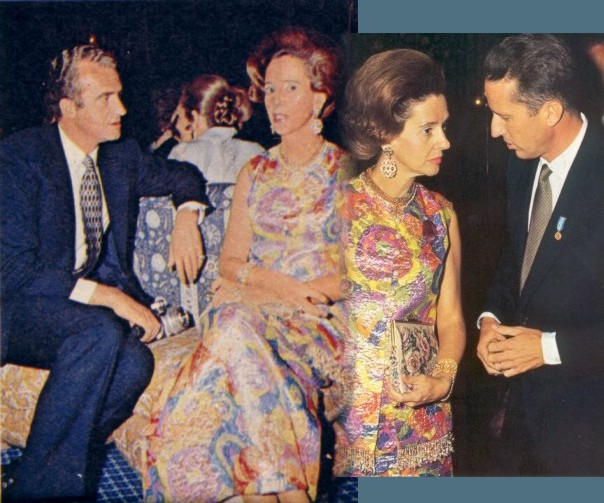
Accompanied by, among others, the Emperor of Ethiopia, the King of Jordan, the King of the Hellenes, the Duke of Edinburgh, the President of Turquey, the President of Mauritania, the President of South Africa and the Vice-President of Egypt, the Shah of Iran paid homage to his late father, founder of the Pahlavi dynasty. The guests formed a circle around the tomb of Reza Shah the Great and the Shah placed a wreath of flowers in front of it. The celebrations had begun with a homage to the first Persian sovereign and they ended with an homage of the Shah to his father, the last Shah before himself.
The celebrations had been a success, but they had drawn an awful lot of criticism from several groups of the society, especially from the radical Khomeini in exile. There were attacks in Iranian embassies throughout the World. In Iran, if many thought the celebrations were fantastic, many others wondered about the critics they heard, that the money could have been better spent. The astonishing sums rumoured in the international press (some press put the number at 200 million dollars!) only allowed criticism to grow further. A few days later, the Ministry of Court put the figure at a little under 17 million dollars.

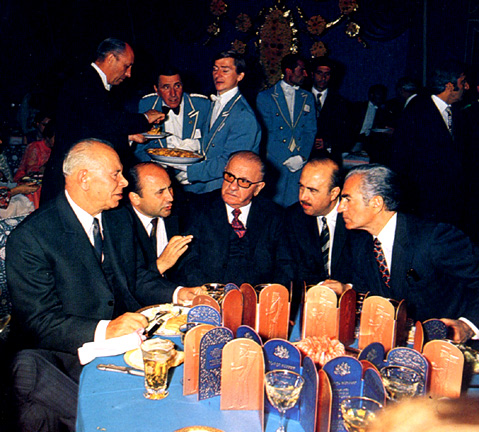
30 years later, one of the organizers of the event, Mr. Ansari, told about the costs: “One hundred and sixty million tomans, that's about $22 million dollars in those days. One third of the money was raised by Iranian industrialists to pay for all the festivities. Another third was from the budget of the Ministry of Court and went to pay for the Tent City. The rest of the money came from the original budget under Senator Amir Homayoun which he had invested in 1960 and was spent on the building of the Shahyad tower. The remaining funds amounting to $1.6 million was, by order of HIM, allocated towards the ongoing construction of a mosque in Qom which on completion was to be named after the late Ayatollah Boroujerdi, the most prominent Shi'a leader in the world.” (in We are awake – 2500-year celebrations revisited, Cyrus Kadivar, The Iranian, 2002)
While it could be said that the money could have been spent in different ways, the diplomatic success and what could result from it could and should be regarded as a major investment by Iran, an investment with medium and long-term results. Furthermore, much of the money was spent in infrastructures such as the Shiraz airport and the highway to Persepolis, vital for the development of tourism in the area. It is odd enough that the tomb of the harshest critic of the celebrations, the Ayatollah Khomeini, who managed to overthrow the Shah, would cost Iran 5 times as much as the celebrations. And numerous western examples could be given as money spent without a purpose worth of mention. At least the money spent in Persepolis had a purpose: providing the entrance of Iran back to the World stage as a vital nation and managing to have the investment needed for the development of the Iranian economy.
